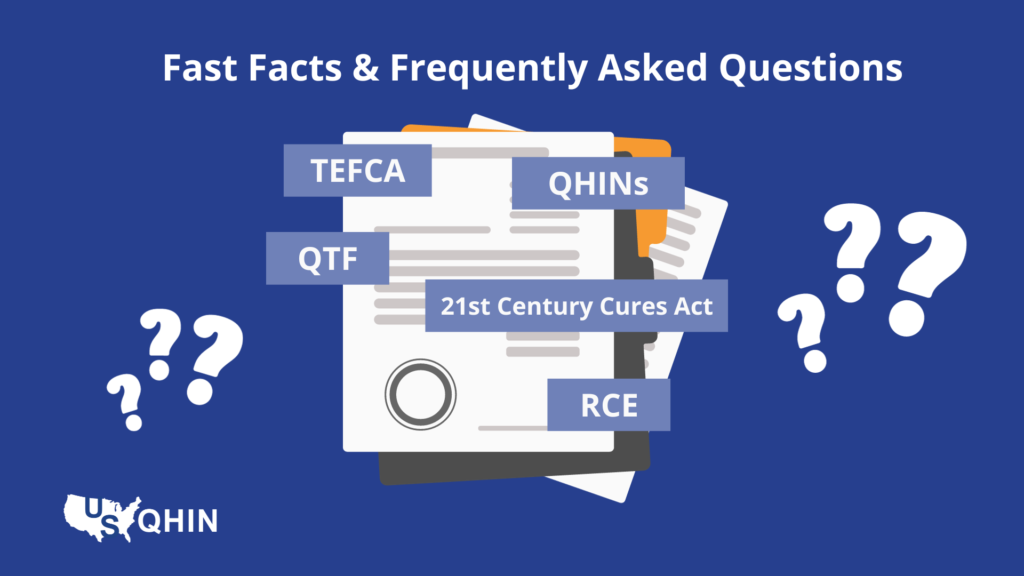QHIN & TEFCA FAQs

USQHIN recently announced its intention to become a Qualified Health Information Network (QHIN) under the Trusted Framework and Common Agreement (TEFCA).
We have compiled a list of necessary information and frequently asked questions to help you better understand TEFCA, QHINs, and the surrounding terminology.
What is TEFCA?
TEFCA is a set of rules and non-binding principles, terms and conditions established under the 21st Century Cures Act (Cures Act) to establish universal interoperability standards and facilitate the secure exchange of electronic health information (EHI) between health information networks (HINs) nationwide.
What is the Common Agreement?
The Common Agreement establishes the baseline technical and legal framework for HINs to securely share EHI nationwide as part of the Cures Act. It defines the rules and expectations for HINs and their users to exchange clinical data seamlessly and securely.
What is the 21 Century Cures Act?
The Cures Act, signed into law on December 13, 2016, is designed to help accelerate medical product development and bring new innovations and advances to patients who need them faster and more efficiently.
What is the QHIN Technical Framework (QTF)?
The QHIN Technical Framework (QTF) focuses on the technical and functional aspects of QHIN-to-QHIN exchange, including patient identity resolution, authentication, and performance measurement. These requirements are incorporated into the Common Agreement to ensure seamless and secure interoperability among QHINs.
What is the RCE?
The Recognized Coordinating Entity (RCE) is responsible for developing, implementing, and maintaining the Common Agreement component of TEFCA. The Sequoia Project, a non-profit 501(c)(3) was awarded cooperative agreement by the ONC as the RCE for TEFCA in August 2019. The RCE is responsible for developing, implementing, and maintaining the Common Agreement component of TEFCA.
What is a QHIN?
QHINs are the certified entities responsible for facilitating the national exchange of health information and will act as connectivity brokers to ensure interoperability between the networks they represent. TEFCA defined the technical and legal requirements, or rules of the road, for nationwide electronic health information exchanges. The architecture will follow a “network of networks” structure, where QHINs serve as the super nodes and are responsible for connecting to other QHINs to facilitate the national exchange of data between QHINs, Participants, and Subparticipants. Each QHIN is responsible for the onboarding and management of their Participants and Subparticipants. Each QHIN will have to be certified by the Sequoia Project, which is the recognized coordinating entity (RCE), and by proxy, receive a government certification.
Who Are The First QHINs?
On Dec. 12, 2023 the U.S. Department of Health and Human Services (HHS) and the Office of the National Coordinator for Health Information Technology (ONC) announced the designation of the first five QHINs. The five announced QHINs are eHealth Exchange, Epic Nexus, Health Gorilla, KONZA and MedAllies. USQHIN is the twentieth candidate to formally seek QHIN status.